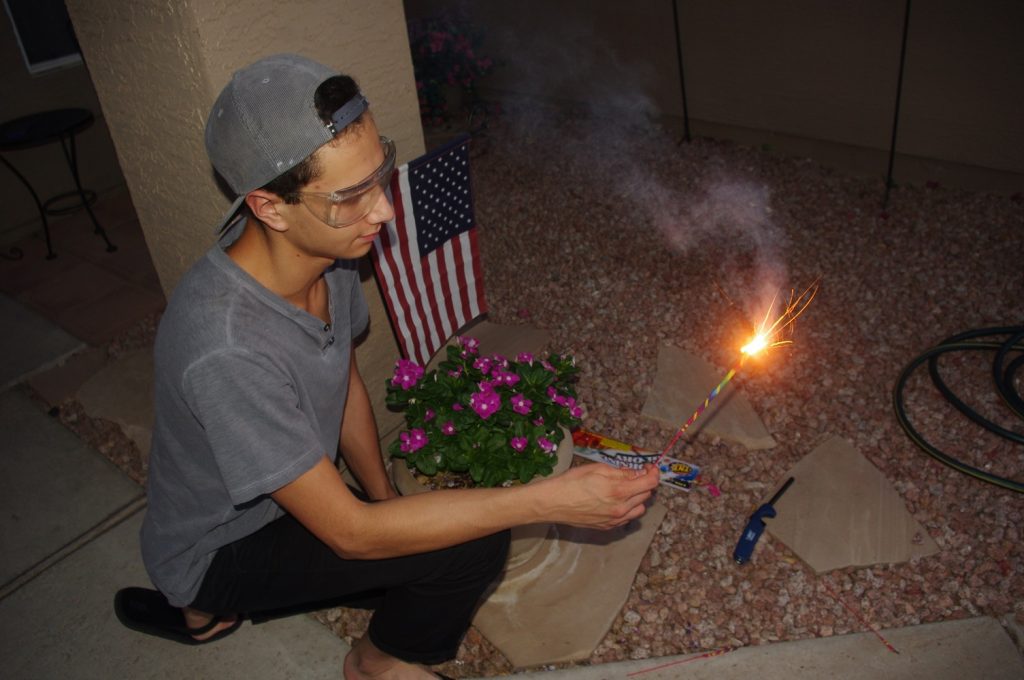
As a 10-year-old growing up in the Midwest, Jon Konti remembers the anticipation that started weeks before the July 4th holiday—those big industrial-strength skyrockets set off at the hometown stadium, the secretly purchased Chinese firecrackers that some of his buddies somehow mysteriously acquired, even the hand-held sparklers that offered an always exciting, though presumably harmless, thrill.
That was then. In the ensuing 25 years, Konti no longer looks forward to what has emerged as the No. 1 day of the year for fireworks and, as a staggering byproduct, the horrific injuries that increasingly have become associated with them.
Now, as a practicing, board-certified Tempe ophthalmologist, Konti and his medical-practice partners know they’ll likely have to face anguished parents and sometimes agonizingly burned children in Valley hospitals where emergency room doctors have sent out an urgent call for an eye specialist.
“You can’t believe what we sometimes find when we arrive,” said Konti, noting that even something as commonplace as a sparkler set off in the family’s front yard can inflict life-altering injuries.
It takes only a quick search through Google’s massive collection of eye-injury images to acknowledge Konti’s grasp of the severity that comes with our nation’s infatuation with fireworks—a search, by the way, that we don’t recommend to any with an aversion to viewing, close-up, the damage that can be incurred by something so deceivingly innocuous as store-bought Bangers, Bouquets or Bombettes.
Since he has started volunteering for the recurring July 4th duty that takes him to East Valley hospitals, Konti says he has memories of cases where he was able to save the eyesight of a child because of his specialized training, along with another, less fortunate case where he had to remove a child’s eye when it was beyond repair.
While indeed life-threatening injuries can result from some of the larger, commercially produced fireworks, Konti says the majority of cases he’s called on to treat involve those seemingly innocent sparklers that kids have looked forward to as far back as most adults can remember, and no doubt beyond.
While he doesn’t want to—and obviously cannot—put a damper on families’ enjoyment of one the 4th of July’s mainstays, Konti advises parents to keep kids, who often are bystanders to locally bought fireworks displays, well away from any such activities.
“Some of those can be very dangerous,” he warns.
To parents who don’t want their kids to be deprived of one of the July 4th holiday’s biggest attractions, Konti says there’s one major safeguard they can keep handy—in addition, that is, to parental common sense: A pair of safety goggles, the kind that are widely available in many local stores.
“Even those inexpensive ones that can be found in almost any hardware store are better than nothing at all,” says Konti.
Best bet, however, are the kind that incorporate polycarbonate resin into their lenses, since those typically offer a greater degree of protection.
As to how his position on fireworks-related risks compares with those of other ophthalmologists around the country, Konti travels in impressive company. The American Academy of Ophthalmology and the U.S. Consumer Product Safety Commission present a unified front in the ongoing battle to reduce fireworks-related eye injuries.
A 2015 poll conducted by the Academy uncovered the not-surprising fact that such injuries increased to 1,300 in 2014 from less than half that number in 2012.
As part of its efforts to minimize the long-term damage should an eye injury occur, Konti and the Academy offer these recommendations:
Seek medical attention immediately; do not rub your eyes; do not rinse your eyes; do not apply pressure; do not remove any objects that are stuck in the eye; do not apply ointments or take any blood-thinning medications such as aspirin or ibuprofen.
Summarizing the advice from Konti and other concerned ophthalmologists nationwide, let professionals produce your family’s July 4th entertainment.
Otherwise, should you elect to stage your own home-grown show, maintain a safe distance, use common sense and don’t forget the margin of eye-protection that comes with using safety goggles.
Says Konti: A few simple precautions can help prevent a lifetime of regret.
Dr. Jon Konti is board-certified ophthalmologist with Ophthalmic Surgeons and Physicians, a long-established and highly regarded medical practice at 3200 S. Country Club Way, Tempe. Phone:
480-839-0206.

